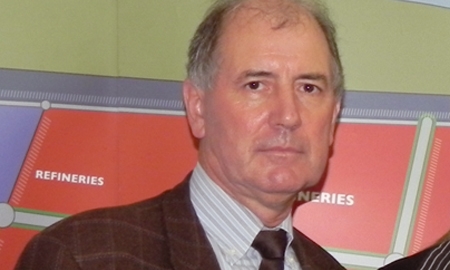A streetwise Belgian construction giant is partnering with the Nigerian authorities in building one of the largest and most ambitious free trade zone facilities on the African continent. The Olokola Free Trade Zone (OKFTZ) is going to be not just bigger, not just better, but different from the others.
Start with location. The 10,000-hectare complex under development is just around 60 miles east of Lagos, Nigeria’s commercial capital. More importantly, it is right on the Olokola coast, a region straddling the southern states of Ogun and Ondo. Both states are actively partnering with the Belgian firm International Port Engineering and Management (IPEM) to see that it gets built.
What makes this project a game changer for Nigeria is that this complex of terminals, manufacturing plants and business amenities, is to grow around the only facility for deep-draught shipping between Cadiz in Spain and Capetown in South Africa. And according to Luk Haelterman, IPEM’s Managing Director of the OKFTZ project, this capability is a major advantage that also brings some major headaches.
“Deep sea ports are infrastructure projects that are long-term by nature,” he says. “That means you will have to wait at least ten years before getting a return on your investment. And, believe me, they are capital intensive: $2 billion (£1.25 billion) is nothing. Add to that the fact that bankers worry about putting so much upfront into an environment they see as full of uncertainies and instability.”
“Working over such an extended time frame, you have to proceed one phase at a time,” adds Mr Haelterman. Firstly, IPEM will dredge the seabed so that the port can accommodate vessels with a nine-metre draught, then deepen it to 14 metres and finally to 19 or 20, at which point the latest shipping vessels, post-panamax and even larger, will be able to navigate snugly into their berths.
A principal beneficiary would be Nigeria’s exports. “We have a large single point mooring development solving the issue about the cost of petrol transport,” notes Mr Haelterman. “Our project can substantially reduce existing inefficiencies and ensure vessels’ safe and efficient movement as they approach the shore.”
The country’s need for additional cargo handling capacity is nothing short of critical, and the former Managing Director of the Nigerian Ports Authority, Suleiman Omar, explains why: “Our ports are designed to handle cargoes of about 40 million tonnes. In 2010, we took 80 million, and last year, 100 million. That is 150 per cent above their capacity,” he says. “Our facilities are not only overextended, but also largely obsolete, as they were intended for vessels drawing no more than 13 or 14 metres.”
Ondo state would be glad of the chance to export more bitumen and other minerals, along with its agricultural products such as rubber and palm oil. Development partner Ogun state has committed $1.6 million to building a network of three-lane access roads to expedite the shipment of incoming goods to commercial hubs from where they will reach deep into the African continent.
In addition to the port facilities, the OKFTZ supports activities that add value to the goods that pass through it, and to that end plans on constructing oil refineries, tank farms, light and heavy manufacturing plants, an airstrip/heliport and a business district with VIP hotels and conference facilities.
One problem is the lack of a nearby source or pipeline connection bringing the natural gas needed to fire up the power plants that churn out the vast amounts of electricity required by a project of this scale. This, however, is a competency of the federal government which is currently involved in privatising its power sector assets. Mr Haelterman says he is hopeful of receiving the same support from federal authorities as he has received from Ogun and Ondo, but now is not the right time.
“Things are at a very early stage,” says Mr Haelterman. “We have 600 investors, but are aiming for 1,000. This means at the end of the year we have to show results. Our first tenants will soon begin moving in and we will custom build for them – keeping within the framework of the master plan, of course. Our main goal is to get this first cluster going. After that, the job becomes easier.”

0 COMMENTS